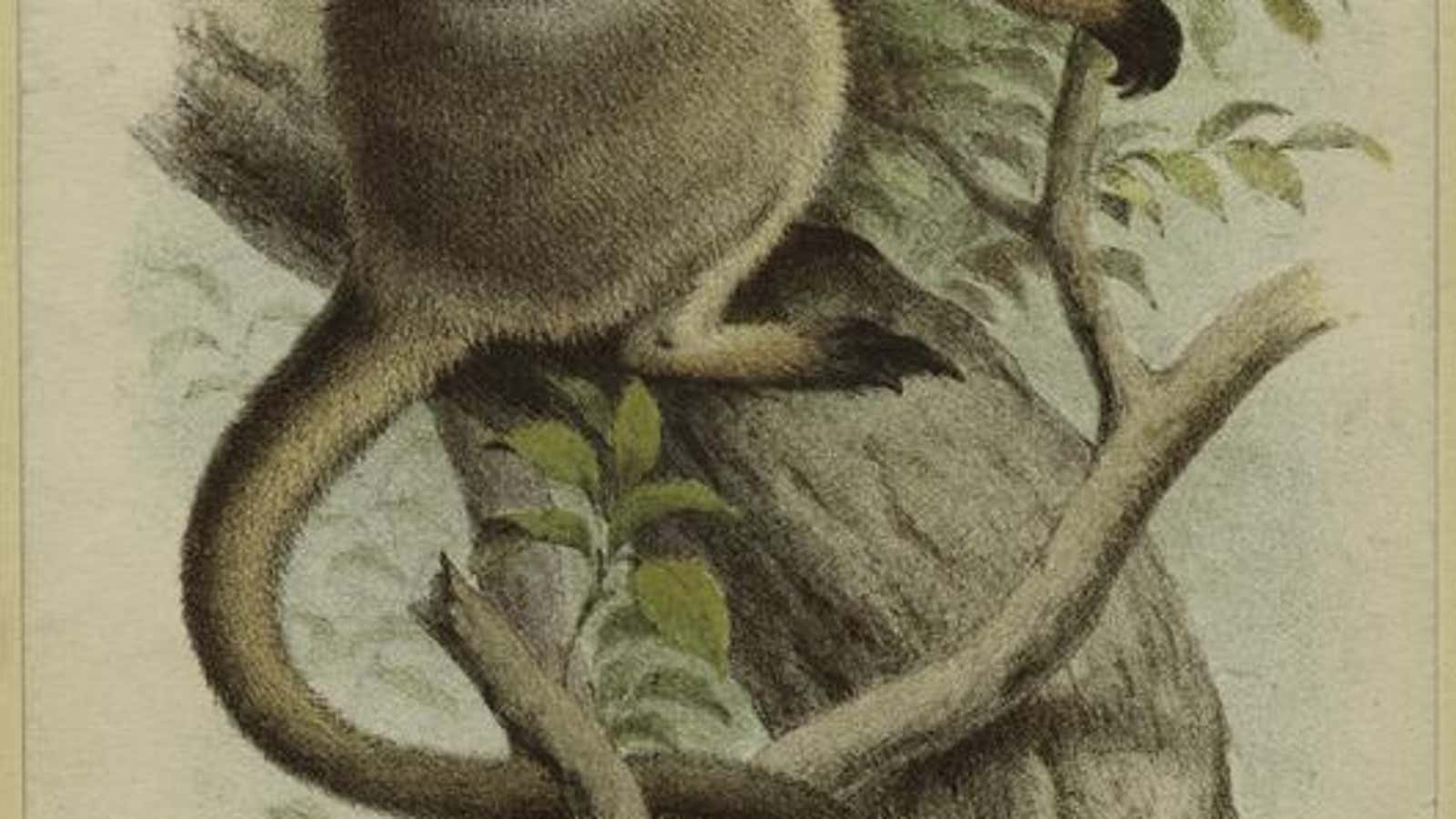In 1928, Ernst Mayr, then one of the world’s most respected evolutionary biologists, spotted a species of tree kangaroo he hadn’t seen before high in the mountains in what is now West Papua, Indonesia. He shot it and sent the pelt to the Natural History Museum in London. That was the first, and last, recorded contact between the Wondiwoi tree kangaroo and Western science.
“It is one of the most poorly known mammals in the world,” Mark Eldridge, a marsupial biologist at the Australian Museum in Sydney, told National Geographic.
In July, Michael Smith, an amateur biologist from the UK, trekked through West Papua’s Wondiwoi mountain range searching for the elusive kangaroo, which ranks as one of the 25 most-wanted lost species, according to Global Wildlife Conservation. He emerged with photographs of an animal that appears to be same species that Mayr spotted 90 years ago.
Tree kangaroos
Close relatives to kangaroos and wallabies—fellow marsupials—tree kangaroos look something like a cross between a bear and a monkey, with well-muscled arms and long claws that allow them to pull themselves high up into trees. There are 17 species and sub-species in total, all of which live in northern Australia and New Guinea (the large island where West Papua is located). While none are as elusive as the Wondiwoi, most are endangered due to habitat destruction.
The explorer
Smith, who lives in Farnham, England and studied biology at university, spends his vacations searching for rare and endangered plants and animals. In his day job, he works for a medical communications firm. On a trip to New Guinea to study rhododendrons last year, he heard about the Wondiwoi tree kangaroo.
“All this just shows that you can find interesting things if you simply go and look,” Smith told National Geographic. “On holidays over the years, I’ve discovered all kind of weird bits of archeology and ethnography. The general belief that there’s nothing more of interest to discover is quite mistaken.”
Is this for real?
The markings and coloring of the animal Smith photographed match the pelt in the Natural History Museum in London. Smith searched for the marsupial at an altitude of 1,500 to 1,700 m (4,921 to 5,577 ft) in the Wondiwoi mountains, which would match the animal’s habitats needs. Local hunters rarely venture higher up than 1,300 m, as the area is covered in an incredibly thick bamboo forest. It’s possible the entire species lives in an unusually isolated patch measuring just 40 to 80 sq miles. The closest mountains that reach the same preferred altitude are several hundred miles away.
Tree kangaroos hang out high in the forest canopy—the one that Smith photographed was about 30 m (90 ft) off the ground. Claw marks on the trees, plus tree-kangaroo dung, was what convinced Smith he was in the right place to begin with. He hopes to compare the DNA in the scat to that in the pelt in London to make a definitive identification.
After that, Smith has a new animal to search for. “There’s a species of ringtail possum in the Arfak mountains that’s known only from a specimen collected in 1884,” he told the Alton Post Gazette, his local newspaper. “I’d like to see if it’s still alive and well somewhere.”
